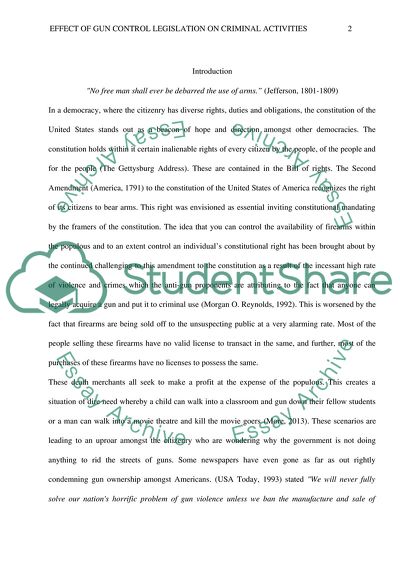Cite this document
(Effect of Gun Control Legislation on Criminal Activities Research Paper, n.d.)
Effect of Gun Control Legislation on Criminal Activities Research Paper. https://studentshare.org/social-science/1798383-research-suggests-that-gun-control-legislation-in-the-united-states-has-little-to-no-effect-on-lowering-homicide-rates-lessening-gun-related-crimes-or-the-number-of-illegal-weapons
Effect of Gun Control Legislation on Criminal Activities Research Paper. https://studentshare.org/social-science/1798383-research-suggests-that-gun-control-legislation-in-the-united-states-has-little-to-no-effect-on-lowering-homicide-rates-lessening-gun-related-crimes-or-the-number-of-illegal-weapons
(Effect of Gun Control Legislation on Criminal Activities Research Paper)
Effect of Gun Control Legislation on Criminal Activities Research Paper. https://studentshare.org/social-science/1798383-research-suggests-that-gun-control-legislation-in-the-united-states-has-little-to-no-effect-on-lowering-homicide-rates-lessening-gun-related-crimes-or-the-number-of-illegal-weapons.
Effect of Gun Control Legislation on Criminal Activities Research Paper. https://studentshare.org/social-science/1798383-research-suggests-that-gun-control-legislation-in-the-united-states-has-little-to-no-effect-on-lowering-homicide-rates-lessening-gun-related-crimes-or-the-number-of-illegal-weapons.
“Effect of Gun Control Legislation on Criminal Activities Research Paper”. https://studentshare.org/social-science/1798383-research-suggests-that-gun-control-legislation-in-the-united-states-has-little-to-no-effect-on-lowering-homicide-rates-lessening-gun-related-crimes-or-the-number-of-illegal-weapons.


